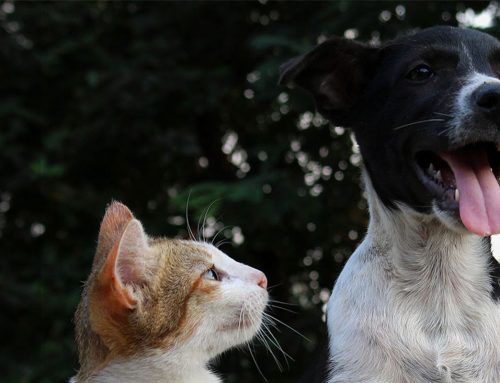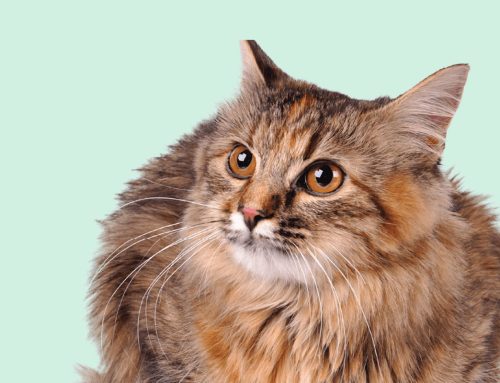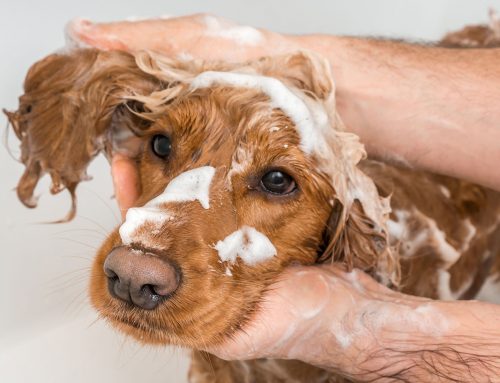Feline Panleukopenia
Last updated on 6/21/2012.
Contributors:
Kari Rothrock DVM
Synonyms:
Feline distemper
Feline parvovirus
Disease description:
Etiology
Feline panleukopenia is a highly contagious disease caused by infection with feline parvovirus (FPV). FPV is a non-enveloped, single-stranded DNA virus. FPV is the prototype virus for several related parvoviruses. Canine parvovirus CPV-2 arose from feline parvovirus through a series of mutations.18 CPV-2 has the ability to infect and cause disease in cats.16 FPV can infect dogs but does not cause clinical disease and is not actively shed from infected dogs.1Various strains of FPV exist around the world.15,19
FPV is very stabile in the environment and can survive for a year at room temperature in organic material. FPV is also resistant to many disinfectants. It is inactivated by bleach, 4% formaldehyde, or 1% glutaldehyde.2
Pathophysiology
FPV is most commonly transmitted through the fecal-oral route. Since it is stabile in the environment, transmission of FPV via fomites also plays an important role (e.g. bedding, litter pans, food bowls, clothing, etc). Parvoviruses are shed through all body secretions during active disease but are shed most consistently in the feces.1 Viral shedding typically lasts 1-2 days during active clinical disease, but recovered cats can shed FPV for up to 6 weeks in their feces and urine. In utero transmission also occurs.2
Parvoviruses require rapidly multiplying cells for sustained infection.3 After initial infection, the virus replicates in the oropharynx for 18-24 hours. A plasma-phase viremia then occurs, distributing the virus to all body tissues. Lesions occur in tissues with the highest rates of mitotic activity. Lymphoid tissue, bone marrow, and intestinal mucosal crypt cells are the most the commonly affected tissues in cats. If in utero or early neonatal infection occurs, the central nervous system, retina, and optic nerves can be affected.2
Lymphoid tissue undergoes necrosis with initial infection and cellular depletion. Direct lymphocytolysis and decreased T cell responsiveness occur from FPV infection. Bone marrow is also targeted, leading to a decrease in myeloid cell population.1
Intestinal crypt cells are damaged by infection with parvoviruses, causing shortened intestinal villi, increased permeability, and malabsorption. The jejunum and ileum are the most affected segments of intestines. The colon has slower mitotic rates than the small intestines; therefore, has milder lesions.2 Gram-negative endotoxemia can occur via translocation of intestinal microbes through the damaged intestinal wall.2,3
In utero infection can cause several reproductive disorders in queens, including fetal death, infertility, abortion, stillbirth, or passage of mummified fetuses.3 In utero or neonatal infection can lead to neurologic disease in kittens. Cerebellar development continues during the first two weeks after birth, so young kittens can develop cerebellar hypoplasia secondary to feline panleukopenia.4 FPV interferes with cerebellar cortical development due to lytic virus replication in the Purkinje cells of the cerebellum.1,5 In addition, the cerebrum, spinal cord, optic nerve, and retina (multifocal retinal dysplasia) can also be affected.2
Diagnosis
Physical Examination Findings: Clinical signs and findings can range from subclinical infection to sudden death from peracute disease.1 Subclinical disease occurs most often in adult cats. Peracute disease can cause death within 12 hours or lead to “fading kitten” syndrome in neonates.2
Acute disease is the most common form of feline panleukopenia. Cats may be presented with a history of depression, anorexia, vomiting, and diarrhea. However, in one study only 69.3% of affected cats had diarrhea and 62.7% had vomiting.1 Owners may report a history of noticing the cat sitting in a crouched position with the head hanging over a water bowl. Cats may be febrile, although hypothermia can occur later in the course of disease.3 Affected patients may exhibit pain on abdominal palpation and intestinal loops may be palpably thickened. Mesenteric lymphadenopathy may also be noted. Severe dehydration can appear rapidly. Petechial hemorrhages may occur in cats with concurrent disseminated intravascular coagulopathy (DIC).2
Kittens with in utero or neonatal infection can show neurologic signs at 10-14 days of age. Affected kittens are ataxic and walk with a wide-based stance, have hypermetric movements and an elevated, “rudder-shaped” tail. Mentation is normal in these kittens.3 Intention tremors of the head can be noted but are often absent when the kitten is at rest. If forebrain lesions are present, seizures, behavioral changes, and postural reaction deficits may be found.2
Complete Blood Count (CBC): Leukopenia is the most common abnormality found on blood counts. Leukocyte counts typically range from 500 to 3,000 cells/µL.3 The degree of neutropenia has been shown to parallel clinical disease and prognosis, but this trend is not necessarily true with the degree of lymphopenia present.1 Mild anemia may also be present but severe anemia does not typically develop unless intestinal blood loss occurs.2 Thrombocytopenia is the second most common abnormality on the CBC and may occur due to direct bone marrow injury or increased consumption with DIC.1 The severity of thrombocytopenia has been shown to correlate with a negative outcome.6
Biochemistry Panel: Biochemical abnormalities are typically nonspecific. Azotemia can occur from prerenal causes, such as dehydration. ALT, bilirubin, and AST can be mildly elevated. Icterus is rare.2 Hypoalbuminemia is the most common abnormality detected and usually occurs due to decreased protein intake and increased gastrointestinal (GI) losses. Electrolyte imbalances can also occur from GI loss and anorexia.1 Hypoalbuminemia (<3.0 g/dL) and hypokalemia (<4 mmol/L) are considered negative prognostic indicators.6
Serologic Testing: A rise in antibody titer over a two-week period can be used to help diagnose feline panleukopenia.4 Vaccinated cats will have a positive antibody titer, but the highest titers are more consistent with natural exposure.2
Fecal Antigen Testing: Several in-house kits are available that detect FPV antigen in feces using ELISA assays or latex agglutination methods.14 Overall these tests have high-positive predictive values and negative-predictive values. Kits used to detect canine parvovirus can be used to detect feline parvovirus.1,7 However, it has been noted that FPV may sometimes only be detectable in the feces for 24-48 hours post infection.2 In-house parvovirus tests can be positive for up to two weeks after administration of a feline panleukopenia vaccination.7,11
Polymerase Chain Reaction (PCR) Assays: PCR can be used to detect FPV in whole blood, bone marrow, fecal samples, and tissues.2,13
Virus Isolation: Virus isolation may be performed but is not a commonly used diagnostic tool for feline panleukopenia.1
Disease description in this species:
Feline panleukopenia is a highly contagious disease of cats. Subclinical cases are more common in adult cats.3 Kittens are the most likely to develop clinical disease. The highest morbidity and mortality rates are typically found in kittens between 3-5 months of age. In one study in the United Kingdom, feline panleukopenia was the cause of 25% of all kitten mortality.2 No gender or breed predisposition has been documented.
Clinical Signs
Possible clinical signs include anorexia, dehydration, depression, vomiting, diarrhea, abdominal pain, ataxia, incoordination, intention tremors, hypermetric gait, seizures, behavioral changes, abortion, stillbirths, infertility, and neonatal death.1-3
Etiology:
Feline parvovirus (panleukopenia)
Breed predilection:
None, no breed signalment
Sex predilection:
None
Age predilection:
Juvenile
Newborn
| Diagnostic procedures: | Diagnostic results: |
|---|---|
| Hemogram (complete blood count) | ANEMIA Leukopenia Lymphopenia, lymphocytes decreased Neutropenia, neutrophils decreased Thrombocytopenia |
| Serum chemistry | Alanine aminotransferase (ALT) increased Alkaline phosphatase (ALP) increased Aspartate aminotransferase (AST) increased Azotemia/uremia Blood urea nitrogen (BUN) increased Hyperbilirubinemia, bilirubin increased Hypoalbuminemia Hypokalemia |
| Urinalysis | Urine specific gravity increased |
| Ocular examination | Optic disc atrophied RETINAL CHANGES Retinal dysplasia Retinal pigment abnormal |
| Otoscopy | Ear canal wax, discharge, debris |
| Serology for specific disease | Parvovirus positive in serum, feces |
| Ultrasonography of abdomen | Abdominal mass internal Intestines, bowel loops thickened |
| Bone marrow aspirate, biopsy and evaluation | Erythroid hypoplasia Granulocytic hypoplasia Lymphoid depletion |
| Biopsy and histopathology of liver/gall bladder | Hepatitis, liver inflamed |
| Biopsy and histopathology of small intestines | Intestinal crypt cell degeneration Intestinal villous blunting Intestinal villous fusion |
| Virus isolation various tissues, fluids | Parvovirus isolated from feces, intestines, lymph nodes, lung |
| Biopsy and histopathology of brain | Cerebellar granular cell degeneration Cerebellar hypoplasia Cerebellar Purkinje cell degeneration |
| PCR assay on feces | Parvovirus positive by PCR |
| Necropsy | ENTERITIS Intestinal ulcers |
Treatment/Management/Prevention:
SPECIFIC THERAPY
The main component of therapy for feline panleukopenia is supportive care since there is no specific antiviral therapy available.
SUPPORTIVE THERAPY
- Fluid therapy is essential to correct electrolyte imbalances, replace maintenance needs, and correct dehydration. Fluid therapy can be administered subcutaneously or intravenously depending on the severity of clinical illness.2,3
- Parental vitamin B complex therapy is given to help prevent thiamine deficiency.1,2
- Antiemetics may be needed in cases of persistent vomiting. Anticholinergics are avoided since they cause ileus of the bowel. An example is metoclopramide at 0.2-0.4 mg/kg PO, SQ q 6-8 hrs or 1-2 mg/kg IV q 24 hrs.2
- Broad spectrum antibiotics may be given to counteract secondary bacteremia that can occur from translocation of intestinal microbes due to intestinal mucosal injury. Chosen antibiotics should have efficacy against gram negative bacteria.1,2
- Ampicillin: 15-20 mg/kg IV, SQ q 6-8 hrs2
- Gentamicin: 2 mg/kg IV, SQ, IM q 8 hrs; monitor for nephrotoxicity2
- Cephapirin: 10-30 mg/kg IV, SQ, IM q 6-8 hrs2
- Plasma or whole blood transfusions are considered in cases of severe anemia or when a patient’s plasma protein levels fall below 4 g/dL.3
- Low-dose heparin therapy (50-100 U/kg SQ q 8 hrs) can be administered in cases of secondary DIC.2
- If vomiting is severe, oral foods are withheld until vomiting is controlled. They are then reinstituted as soon as possible. A highly digestible, bland diet should be offered. Rarely, some patients require the use of a feeding tube to help meet their nutritional requirements.2
- Anti-FPV serum from vaccinated or recovered cats can be used to prevent infection of cats after exposure to FPV but does not have any value once clinical signs develop.1,2
MONITORING and PROGNOSIS
In clinically ill cats electrolytes, a complete blood count, and hydration status are monitored daily.3 Prognosis for recovery from feline panleukopenia is good if the cat survives the first few days of clinical illness.2,3 Negative prognostic factors include an albumin level <3.0 g/dL, serum potassium level <4 mmol/L, thrombocytopenia, and severe leukopenia (<2,000 cells/µL).1,3,6 In one study of 244 cats with panleukopenia, the overall survival rate was 51.1%.6 Prognosis for peracute panleukopenia is poor as many patients die within 12 hours.2 Kittens with cerebellar hypoplasia can often have a good quality of life and may make suitable pets, depending on the severity of their neurologic deficits.2
Preventive Measures:
Decreasing transmission – Since FPV is stabile in the environment and resistant to many disinfectants, the environment (e.g. bowls, cages, litter pans, etc.) should be disinfected with a 1:32 dilution of bleach.3 Shedding of FPV typically only lasts 1-2 days after infection but can continue for up to 6 weeks after recovery. Clinically ill or recovered cats should be isolated from other cats during this time.2 One study from 2007 suggested that administration of feline interferon omega to neonatal kittens and pregnant queens may increase antibody production and improve resistance to FPV but subsequent clinical trials testing this theory are lacking.10
Vaccination – Vaccines against FPV are very effective and most vaccinated cats are completely protected from clinical disease.4 Modified live virus (MLV) vaccines and killed FPV vaccines are available. MLV vaccines typically yield a more rapid protection compared to killed vaccines.1,8 However, use of MLV vaccines in pregnant queens and kittens <4 weeks of age should be avoided. MLV vaccines containing FPV can cause neurologic disease in developing fetuses and neonates.4
The AAFP recommends vaccination of kittens beginning as early as 6 weeks of age and repeating vaccines every 3-4 weeks until 16 weeks of age. Cats are then vaccinated one year later and every 3 years thereafter. Maternally-derived antibody titers typically wane by 8-12 weeks of age, which allows for vaccination without antibody interference. Since interference can occur in some kittens 12 weeks of age or slightly older, it is recommended the last FPV vaccine be administered at 16 weeks of age.4,12 Evidence exists that cats that respond to FPV vaccination have solid immunity that lasts for at least 7 years.1,4 Cats that recover from FPV infection are immune for life.3
Special considerations:
FPV has been reported in captive, nondomestic cats, such as the lion, tiger, lynx, and European wild cat.20, 22 Infection has also occurred in the Asian civet, raccoon, coatamundi, and mink.12,21
Other Resources:
- Client information sheet on Vaccines for Your Cat by Dr. Young
- Client Handout on Feline Distemper by Dr. Brooks
- Video of kitten with cerebellar hypoplasia by Dr. Bashaw
- AAFP Vaccination Guidelines 2006
- UCDavis Koret Shelter Medicine program’s information on Feline Panleukopenia
- Recent Message Board discussions on Feline Panleukopenia
- AAFP Fact Sheet on Feline Panleukopenia
Differential Diagnosis:
- Acute poisoning or toxins
- Feline leukemia virus infection
- Neoplasia
- Salmonellosis
- Severe intestinal parasitism
- Other causes of Cerebellar Hypoplasia
References:
- Hartmann K: Feline Panleukopenia–Recognition and Management of Atypical Cases. ACVIM 2010.
- Greene CE, Addie DD: Feline Parvoviral Infections. Infectious Diseases of the Dog and Cat, 3rd ed. St. Louis, Elsevier Saunders 2006 pp. 78-87.
- Scott FW: Feline Panleukopenia. Blackwell’s Five Minute Veterinary Consult: Canine and Feline, 4th ed. Ames, Blackwell Publishing 2007 pp. 492-493.
- Richards JR, Elston TH, Ford RB, et. al: The 2006 American Association of Feline Practitioners Feline Vaccine Advisory Panel report. J Am Vet Med Assoc 2006 Vol 229 (9) pp. 1405-41.
- Aeffner F, Ulrich R, Schulze-Ruckamp L, et. al: Cerebellar hypoplasia in three sibling cats after intrauterine or early postnatal parvovirus infection . Dtsch Tierarztl Wochenschr 2006 Vol 113 (11) pp. 403-406.
- Kruse BD, Unterer S, Horlacher K, et. al: Prognostic factors in cats with feline panleukopenia. J Vet Intern Med 2010 Vol 24 (6) pp. 1271-1276.
- Neuerer FF, Horlacher K, Truyen U, et. al: Comparison of different in-house test systems to detect parvovirus in faeces of cats. J Feline Med Surg 2008 Vol 10 (3) pp. 247-251.
- Lappin MR: Panleukopenia Antibody Responses Following a Single Inoculation with One of Five FVRCP Vaccines. ACVIM 2007.
- Résibois A; Coppens A; Poncelet L: Naturally occurring parvovirus-associated feline hypogranular cerebellar hypoplasia– A comparison to experimentally-induced lesions using immunohistology. Vet Pathol 2007 Vol 44 (6) pp. 831-41.
- atterson EV; Reese MJ Tucker SJ; et al: Evaluation of inflammation and immunity in cats with spontaneous parvovirus infection: consequences of recombinant feline interferon-omega administration. Vet Immunol Immunopathol 2007 Vol 118 (1-2) pp. 68-74.
- Patterson EV; Reese MJ, Tucker SJ, et al: Effect of vaccination on parvovirus antigen testing in kittens. J Am Vet Med Assoc 2007 Vol 359 (63) pp. 359-63.
- Truyen U, Addie D, Belák S, et al: Feline panleukopenia. ABCD guidelines on prevention and management. 2009 Vol 11 (7) pp. 538-46.
- Identification of parvovirus in the bone marrow of eight cats. Aust Vet J 2012 Vol 90 (4) pp. 136-9.
- Detection of protective antibody titers against feline panleukopenia virus, feline herpesvirus-1, and feline calicivirus in shelter cats using a point-of-care ELISA.. J Feline Med Surg 2011 Vol 13 (12) pp. 912-8.
- An DJ, Jeong W; Jeoung HY, et al: Phylogenetic analysis of feline panleukopenia virus (FPLV) strains in Korean cats. Res Vet Sci 2011 Vol 90 (1) pp. 163-7.
- Decaro N; Buonavoglia D; Desario C, et al: Characterisation of canine parvovirus strains isolated from cats with feline panleukopenia. Res Vet Sci 2010 Vol 89 (2) pp. 275-8.
- Jas D; Aeberlé C; Lacombe V, et al: Onset of immunity in kittens after vaccination with a non-adjuvanted vaccine against feline panleucopenia, feline calicivirus and feline herpesvirus. Vet J 2009 Vol 182 (1) pp. 86-93.
- Ohshima T; Mochizuki M: Evidence for recombination between feline panleukopenia virus and canine parvovirus type 2. J Vet Med Sci 2009 Vol 71 (4) pp. 403-8.
- Decaro N; Desario C; Miccolupo A, et al: Genetic analysis of feline panleukopenia viruses from cats with gastroenteritis. J Gen Virol 2008 Vol 89 (Pt 9) pp. 2290-8.
- Duarte MD, Barros SC, Henriques M, et al: Fatal infection with feline panleukopenia virus in two captive wild carnivores (Panthera tigris and Panthera leo). J Zoo Wildl Med 2009 Vol 40 (2) pp. 354-9.
- Demeter Z, Gál J, Palade EA, Rusvai M: Feline parvovirus infection in an Asian palm civet (Paradoxurus hermaphroditus). Vet Rec 2009 Vol 164 (7) pp. 213-6.
- Wasieri J; Schmiedeknecht G; Förster C; et al: Parvovirus infection in a Eurasian lynx (Lynx lynx) and in a European wildcat (Felis silvestris silvestris). J Comp Pathol 2009 Vol 140 (2-3) pp. 203-7.






